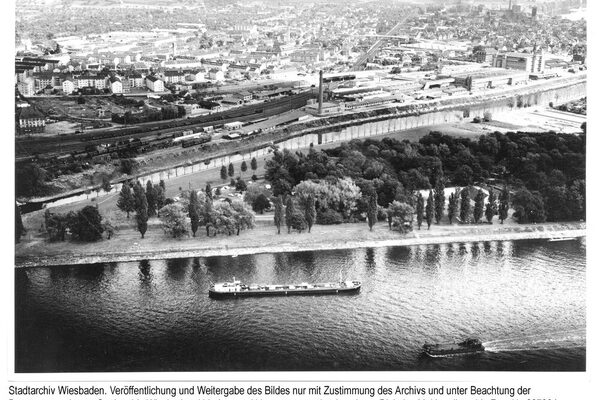Maaraue
The name Maaraue is derived from the Old High German "marh" ("warhorse"). In the Middle Ages, the Maaraue was often the venue for royal court meetings. The "morawa" was first mentioned as a meeting place in December 1073; however, meetings of kings and emperors probably took place on the Maaraue even earlier. The most glamorous festival to have taken place on the Maaraue was the great Mainz court festival (20.05.-22.05.1184): The German Emperor Frederick Barbarossa celebrated the Whitsun festival on the Maaraue with 70 princes and a large entourage. A palace with a large wooden chapel was erected for the emperor and magnificent tournaments and banquets were held. Today, a sandstone column commemorates this historic event.
In 1632, King Gustav Adolf built a redoubt to protect a ship's bridge, which was extended by the French in 1689 and further reinforced in 1792/93. In 1892-94, a raft harbor was built on the so-called Old Main or Mainlache, a dead arm of the Main. At times, the Kostheim sewage treatment plant was operated from the Maaraue. Today, the water-bearing arm of the Rhine serves as a port for the Wiesbaden water police and for leisure boats; it is also used by rowers and canoeists as a training course. The Maaraue peninsula is one of Wiesbaden's largest local recreation areas.
Literature
Wiesbaden in the Middle Ages. History of the City of Wiesbaden 2, Wiesbaden 1980.
